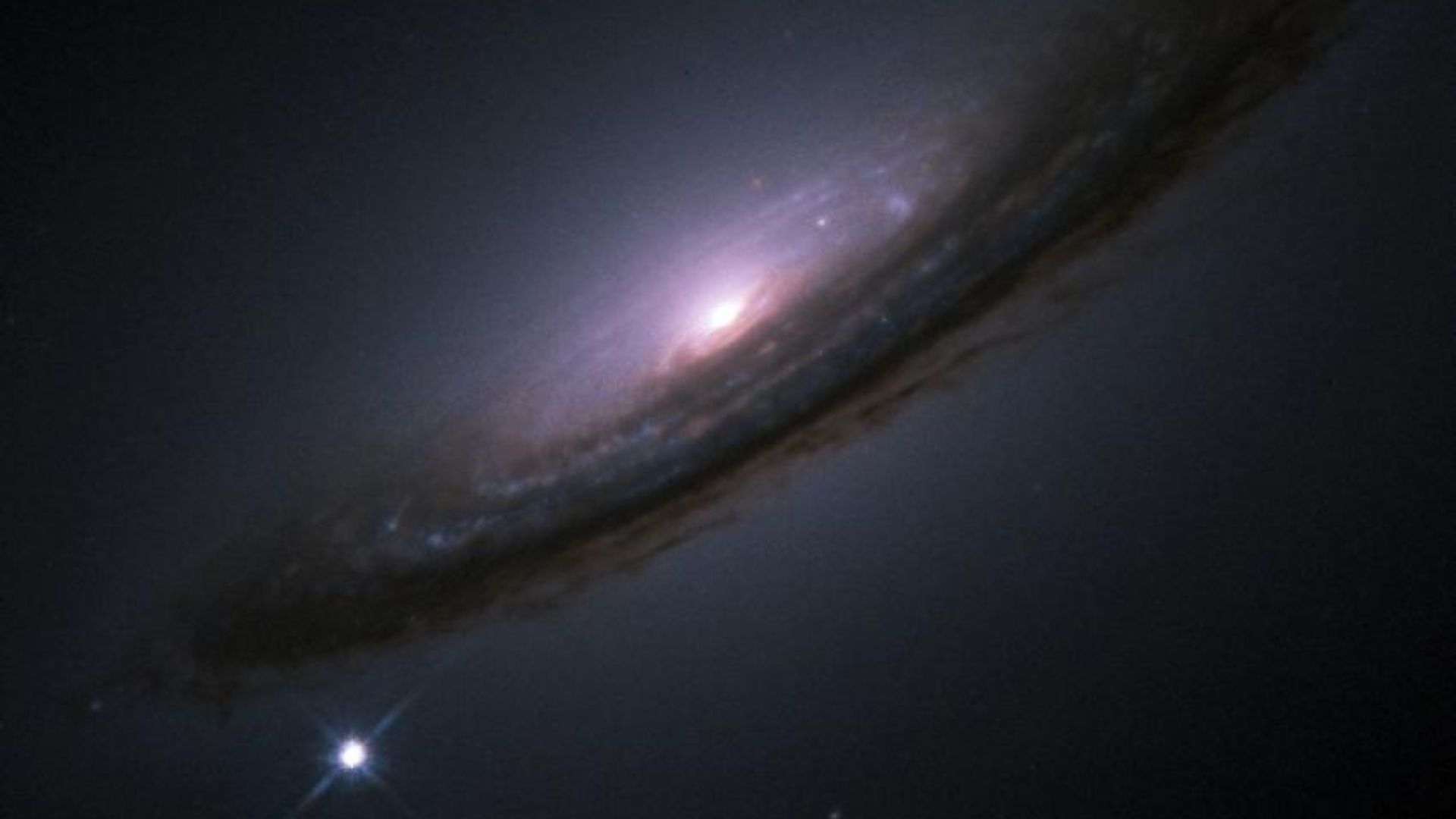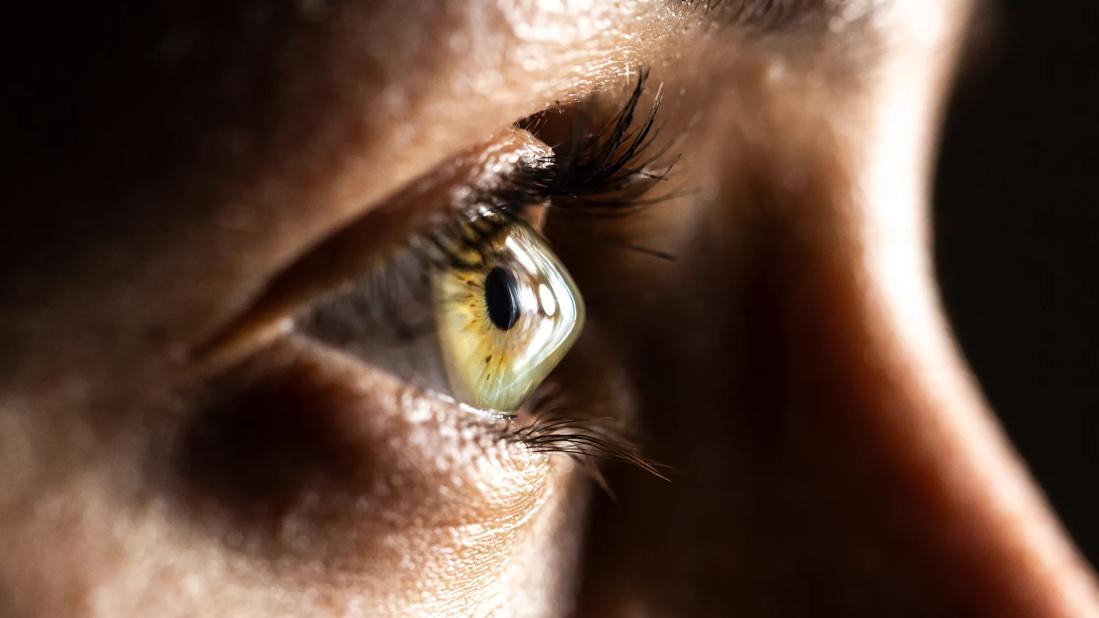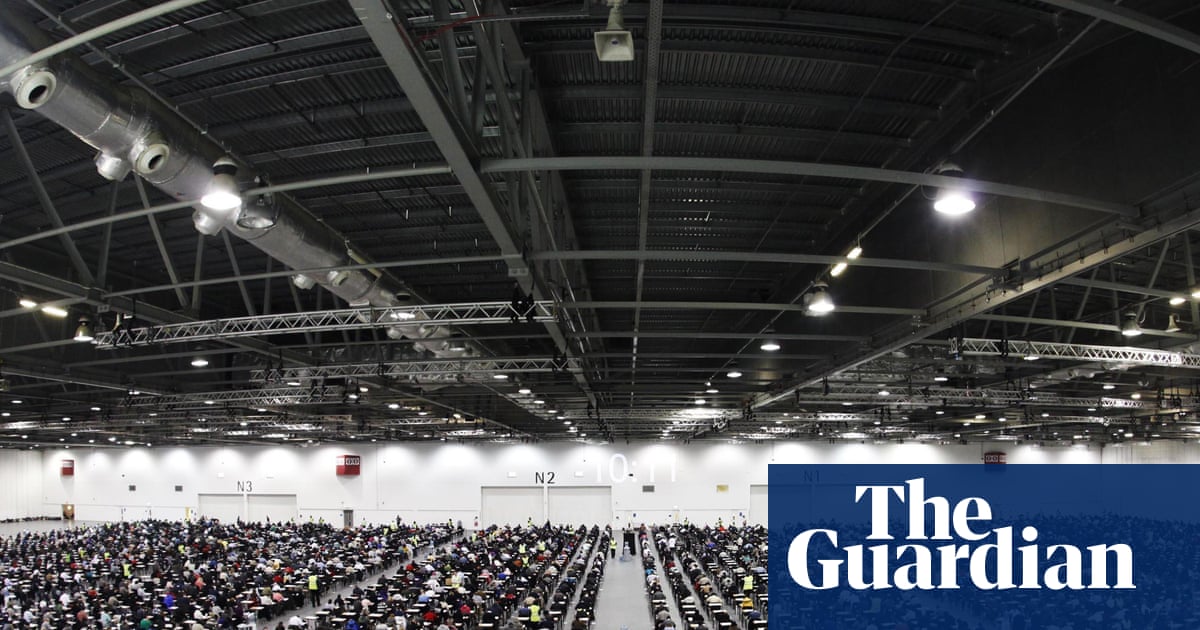For nearly three decades, the scientific world has operated under an assumption: the universe is flying apart faster and faster, doomed to a lonely, cold end.
But a new study suggests we might have misread the cosmic speedometer…

For nearly three decades, the scientific world has operated under an assumption: the universe is flying apart faster and faster, doomed to a lonely, cold end.
But a new study suggests we might have misread the cosmic speedometer…

By J. Bradley Randleman, MD
Advertisement
Cleveland Clinic is a non-profit academic medical center. Advertising on our site helps support our mission. We do not endorse non-Cleveland Clinic products or services. Policy
Up to 5% of people worldwide have keratoconus. Treating them with corneal cross-linking as early as possible helps stop the progression of permanent vision loss. Unfortunately, there’s no clear protocol for early detection of the disease.
We can perform various assessments and gather imaging data — with a slit lamp, corneal topography and multimodal imaging — but sometimes all that information is more confusing than clarifying, especially in subclinical keratoconus.
It’s thought that an underlying mechanical defect precedes keratoconus development. Epithelial remodeling and anterior and posterior surface elevation have been proposed as early indicators. Corneal curvature and thickness also could be indicative.
So, even with all of those metrics in the age of artificial intelligence, why are we still having difficulty identifying patients with subclinical keratoconus? It’s because none of those metrics are effective for detecting the earliest stages of the disease.
In a systematic review of subclinical and forme fruste keratoconus, most of the corneas appeared normal on slit lamp and had normal topography.
The KISA% index, an algorithm based on topography where 0-60 is considered normal and 100 or higher is considered keratoconus, also isn’t foolproof. In a study of Cleveland Clinic Cole Eye Institute patients with progressive keratoconus, we found that 20% of the diseased eyes were misclassified by KISA%, scoring in the normal range. Other research also has shown that KISA% lacks sensitivity.
Corneal epithelial thickness has been thought to partially or totally mask irregular corneal curvature. If that’s the case, we should be able to see changes in early stages of keratoconus on epithelial maps. However, a 2025 Cole Eye Institute study found no demonstrable difference between the epithelial maps of normal eyes and those with subclinical or manifest keratoconus. There was no difference in any parameter, location or metric. What’s more, epithelial mapping has never once performed well in studies of eyes with early keratoconus that still have normal corneal topography.
A global consensus on keratoconus was published in 2015. It included a very straightforward but controversial statement that posterior elevation abnormalities must be present to diagnose subclinical keratoconus. So, in another 2025 Cole Eye Institute study, we evaluated that statement. We screened over 1,200 papers and found 29 that compared the ability of posterior corneal surface, anterior corneal surface or corneal thickness to identify subclinical keratoconus. We found that less than 14% of that published literature reported posterior elevation or posterior surface changes as the best indicator of the disease. Even when assessed by time period, there was never a range of years in which studies reported posterior surface as better than anterior surface or corneal thickness at differentiating keratoconic eyes.
Theoretically, we should first see evidence of keratoconus in corneal biomechanics.
Brillouin microscopy imaging is a newer technique to assess corneal biomechanics. It involves shooting beams of light into specific points of the cornea. Shifts in light frequency, measured by spectrometer, indicate the stiffness and strength of corneal tissue at those points.
In an early ex vivo study using Brillouin imaging, researchers learned that keratoconic tissue was significantly softer and weaker in the cone, although tissue outside the cone was the same as in healthy corneas. It was the first proof of focal weakening in keratoconus.
Now at the Cole Eye Institute, we have developed motion-tracking Brillouin microscopy. It’s different from commercially available Brillouin imaging in that it incorporates OCT and ocular tracking. A 2020 in vivo study found that corneas with keratoconus were weaker in the anterior stroma compared with healthy corneas. So, using that information, we now are using motion-tracking Brillouin microscopy to gather data from the anterior cornea and convert it into two-dimensional, color-coded maps.
Our first study of motion-tracking Brillouin microscopy, in 2023, found distinct differences among normal, keratoconic and laser-corrected corneas. While normal anterior corneas were uniformly stiff, there was some loss of stiffness in the laser-corrected corneas and a real focal weakening in the cones. There were no differences in the periphery, however.
Our 2024 study found that motion-tracking Brillouin microscopy could completely differentiate corneas with subclinical keratoconus from healthy corneas. Brillouin imaging outperformed all Scheimpflug tomography metrics. The differences in the focal profiles of these eyes were immediately evident in the Brillouin shift maps.
In 2025, we used motion-tracking Brillouin microscopy to study anterior, middle and posterior depths of corneas with early, subclinical or no keratoconus. Differences in corneal strength were most pronounced in the anterior stroma in eyes with keratoconus and least pronounced in the posterior stroma.
As we’ve studied this data, we’ve noted that the weakest point of the cornea seems to closely correspond with the thinnest point. Even in a normal cornea, that’s where the softest point is. In another 2025 study, when we plotted softest and thinnest points of corneas, we could clearly identify eyes with subclinical and early keratoconus by looking at their mechanical profile within this narrow region of the cornea.
All of this tells us where to look for keratoconus development. We now know where those earliest mechanical changes will be evident. They will be localized to the anterior third of the anterior stroma, specifically at the thinnest corneal point.
We will become even more precise over time, but already we can significantly reduce the area that we need to scan to detect subclinical keratoconus. The more we learn about the underlying mechanics of the disease, the earlier we will be able to treat patients.
Dr. Randleman is Co-Director of Refractive Surgery at Cleveland Clinic Cole Eye Institute. This article was based on his booth presentation at the 2025 American Academy of Ophthalmology meeting.
Panthera Resources PLC on Monday reported a wider interim loss as it continued to incur arbitration and exploration costs, while confirming progress on its $1.58 billion legal claim against India.
The London-based gold explorer and mine developer in West Africa and India posted a net loss of $1.4 million for the six months that ended September 30, widened from $1.1 million a year earlier. Basic and diluted loss per share was $0.01, unchanged from a year prior.
Panthera said the increased loss reflected the cost of arbitration activity related to its Bhukia gold project in India, alongside continued investment in exploration across its West African portfolio.
Arbitration income more than doubled to $2.6 million for the period from $1.2 million a year prior, but was largely offset by arbitration expenses of $2.5 million, up from $1.2 million.
Cash at the end of September stood at $1.9 million, down from $3.1 million at March 31. Since then, however, Panthera raised a further $1.2 million through the exercise of warrants.
Panthera said the arbitral tribunal has now set a phase one hearing date for December 2026 in relation to its claim against the government of India, which seeks damages of $1.58 billion net of Indian taxes.
The company added that its $13.6 million arbitration funding facility remains available, with around 63% drawn to date.
On the operational front, Panthera said it commenced a 1,740-metre reverse circulation drilling programme at the Bido project and initiated a feasibility study at the Cascades project, both in Burkina Faso.
Chief Executive Officer Mark Bolton said: ‘During the half-year, significant progress was made in the arbitration process for the Bhukia gold project.
‘More recently, the company achieved an important milestone with the commencement of cross-trading on the OTCQB Venture Market in the USA.’
Shares in Panthera Resources opened 2.4% lower at 22.44 pence in London on Monday morning.
Copyright 2025 Alliance News Ltd. All Rights Reserved.

The evolving global landscape, marked by intensifying multipolarity, sanctions-driven geo-economic fragmentation, and expanding regional blocs, has renewed interest…

The world’s largest accounting body is to stop students being allowed to take exams remotely to crack down on a rise in cheating on tests that underpin professional qualifications.
The Association of Chartered Certified Accountants (ACCA), which has almost 260,000 members, has said that from March it will stop allowing students to take online exams in all but exceptional circumstances.
“We’re seeing the sophistication of [cheating] systems outpacing what can be put in, [in] terms of safeguards,” Helen Brand, the chief executive of the ACCA, said in an interview with the Financial Times.
Remote testing was introduced during the Covid pandemic to allow students to continue to be able to qualify at a time when lockdowns prevented in-person exam assessment.
In 2022, the Financial Reporting Council (FRC), the UK’s accounting and auditing industry regulator, said that cheating in professional exams was a “live” issue at Britain’s biggest companies.
A number of multimillion-dollar fines have been issued to large auditing and accounting companies around the world over cheating scandals in tests.
The FRC’s investigation found that instances of cheating also included some tier-one auditors, a category comprising the “big four” accountants – KPMG, PwC, Deloitte and EY – along with Mazars, Grant Thornton and BDO.
In 2022, EY agreed to pay a record $100m (£74m) to US regulators over claims that dozens of its employees cheated on an ethics exam and that the company then misled investigators.
The ACCA said it has now concluded that online tests have become too difficult to police, given the rise in artificial intelligence (AI) tools available to students.
Brand said the ACCA, which has more than half a million students, had worked “intensively” to combat cheating but “people who want to do bad things are probably working at a quicker pace”.
She added that the rapid rise of technology, led by AI tools, had pushed the issue of cheating to a “tipping point”.
Last year, the Institute of Chartered Accountants in England and Wales (ICAEW), which also trains accountants around the world, said reports of cheating were still increasing.
However, the ICAEW still permits some exams to be sat online.
“There are very few high-stakes examinations now that are allowing [remote invigilation],” Brand said.

Lahore: Pakistan have named their T20I squad for next month’s three-match series in Sri Lanka, with several key players absent, including Babar Azam, Shaheen Afridi, Haris Rauf, and Mohammad Rizwan, who are participating in Australia’s Big…

This article explains the detection engineering process using the YARA tool within the context of malware analysis. It provides an overview of YARA syntax, use cases, and practical examples. By the end of the article, readers will…

James Nuñez, assistant professor of molecular and cell biology at the University of California, Berkeley, has been named a 2025 Vallee Scholar by the Vallee Foundation. Established in 2013, the Vallee Scholar Awards program provides…